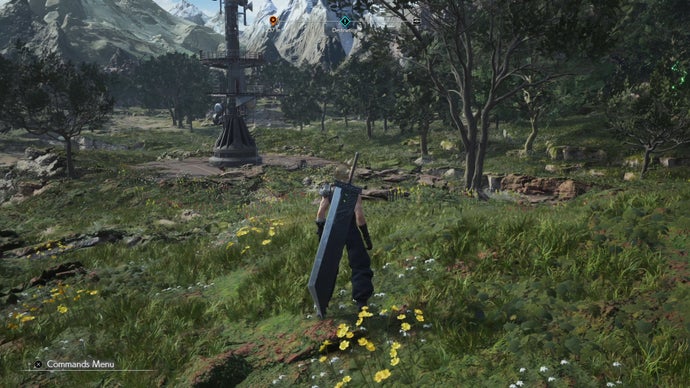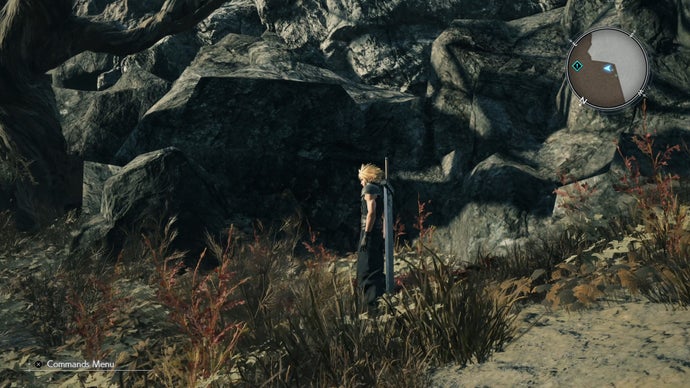The original Final Fantasy 7 pushed technical boundaries on the PS1 and set new standards for storytelling within gaming. Its long-anticipated remake trilogy – starting with 2020’s Final Fantasy 7 Remake – is similarly ambitious, seeking to flesh out and rework the RPG on modern hardware. Due on February 29th, the middle part of the trilogy, Final Fantasy 7 Rebirth, promises a much larger and more sophisticated entry exclusively on PS5 console hardware. How have graphical boundaries been pushed on PS5? Have the demo’s image quality issues been resolved? And can the game hold a stable frame-rate, even with its open-world scope?
Digital Foundry coverage today is more of a preview than the typical in-depth coverage we’d like to deliver. Because of an unusually strict review embargo, we can only show you content from the first few hours of the game, we have to avoid certain sequences, and our accompanying video has to be short by our usual standards. Also challenging has been the announcement of a image quality patch for performance mode, which only ‘dropped’ yesterday. With all of this in mind, expect much more comprehensive coverage on the day of launch.
Once we’re into the game proper, there’s a sense that as accomplished and impressive the game is in so many areas, it’s certainly not above criticism. Firstly, the asset quality is very inconsistent in the opening level. There’s plenty of good-looking rock formations with decent levels of texture detail, but it’s easy to spot some oddly low-resolution work here. Some of the rocks are also very angular and low-poly. It’s inconsistent and a little strange, not quite up to the level of quality we’d expect. To Square-Enix’s credit, there’s lots of ground clutter and these scenes do exhibit a good amount of density, but the overall fidelity just isn’t quite where it should be.
Environmental lighting is also a bit hit or miss. In shadowed regions, we don’t see very effective light occlusion, which gives certain scenes an overly flat look. You end up with an impression that certain areas are glowing or that some objects are floating, without the kind of lighting accuracy many current-gen games strive for. Both of these issues – the asset quality and lighting issues – were present in 2020’s Final Fantasy 7 Remake, and it’s disappointing to see that improvements haven’t been made, at least in the Mount Nibel area.
The shadow resolution in this area is also conservative, which gives the shadows an aliased quality, though the filtering helps somewhat here. However, at very close range, there’s a high resolution cascade, which produces distracting pop-in as the camera nears shadow detail. It’s a very strange choice.
That’s not to take away from where the game excels. The real-time cutscenes look beautiful, as they did in Remake. The characters are lavishly rendered, with excellent skin shading, detailed, smoothly-animated card-based hair, and pitch-perfect clothing materials. These scenes are always lit very evocatively and feature creamy bokeh depth of field. The cinematic direction here is on another level, resembling the heights of Square’s CGI work in other titles. Battle sequences are impressive as well. Fights are a confluence of acrobatics and particle effects, punctuated by show-stopping special abilities and breathtaking synergy attacks. The combat mechanics are fairly basic but provide just enough tactical depth to justify the pyrotechnics on display.
After the Mount Nibel flashback, which comprises Chapter one, we’re onto the open-world abundance of chapter two. The city area here, Kalm, actually looks quite impressive relative to the environmental work we’ve seen thus far. Assets are generally acceptably high-res, without the texture inconsistencies we observed before. There are still some slightly questionable textures in the mix, but the overall asset quality is reasonably high, and scenes are dense with detail and pedestrians. Lighting quality sees a bump too, with finer grades of precalculated shade in shadowed regions. On the whole, it’s a huge upgrade from Nibelheim, which looked almost generationally worse.
Then when we step out into the open world for the first time – which is introduced with an absolutely stunning real-time cutscene with striking shots of the principal cast and pans of the coastal landscape – the game starts to look much more impressive. The level of environmental density is clearly a step beyond most last-generation efforts, with abundant, lush greenery and impressive geometric detail. Those errant textures that gave off a poor first impression are mostly absent here, and the landscape looks consistently good. The lighting still isn’t perfect, so for example, low-lying grass and weeds don’t seem to occlude sunlight at all, giving them an overly flat look. However, the prior environmental woes aren’t nearly as much of a problem and the game generally looks very nice.
Based on its first two chapters, Final Fantasy 7 Rebirth is a good-looking game, albeit one with certain characteristic visual flaws that do emerge in some scenarios. It’s definitely a step beyond its predecessor, but it isn’t making a lot of use of current-gen exclusive rendering tech.




Rebirth ships with two visual modes: a performance mode, which targets 60fps, and a graphics mode, which targets 30fps. In terms of basic settings, these two modes are essentially identical, with little to separate them beyond resolution metrics. However, there’s something curious going on with the performance mode, which has just changed in the last day. People who have played the demo might be familiar with the problem. The performance mode in the demo code looked overly blurry to many players, which actually remained an issue with the initial code we were provided. It looked very soft – certainly softer than the resolution, which often hovered around 1152p or so, would suggest.
As of the February 21st patch, this issue has been addressed – with mixed results. The game’s bicubic or bilinear upscale to 4K has been replaced with something that looks reminiscent of a nearest neighbour technique. You get extra image sharpness, but you also get visible pixelation all across the image. Image quality comparisons between the two modes are a little more interesting than usual. The graphics mode has extra image detail and none of the distracting pixelation present in the performance mode. It looks 4K-like on some details, while at other times it looks more like 1440p, though the actual internal resolution is usually at or near 4K. Perhaps this is a sign of lower-resolution post-processing, which would help explain why the performance mode was so blurry before.
Frame-rates are good across both modes at least. The graphics mode presented a near-perfect 30fps across the content I tested, with no variation outside of a very occasional dropped frame. Open-world traversal and combat generally sailed by at a straight 30. The game still looked a touch choppy though, as there’s no camera motion blur applied to the image. I think Rebirth would look a lot smoother with a healthy bit of per-pixel blur on camera movement (per-object blur is enabled, by the way).


The performance mode operates at 60fps the vast majority of the time, which is a solid achievement for an open-world Unreal Engine 4 title. However, the game does have a tendency to drop frames from time to time, with the most prolonged dips occurring during intense fight sequences and when traversing in Nibelheim. Sprinting around Kalm you see the occasional dropped frame or two, and open-world traversal at speed sometimes induces a dropped frame. Most of the time it’s right at 60fps however.
Rebirth is mostly in good shape based on what we can show you, though I do wish the image quality issues in performance mode had been addressed in a different manner. Solving whatever bugbear is causing a softer-than-expected image should be top-of-mind here, as the scaling solution Square-Enix has gone with is unsatisfactory in my opinion. More drastically, a shift to something like FSR 2 for upsampling might be an effective choice, especially if it was paired with camera motion blur to hide some of its visual artifacts in motion. At a minimum, I would like to see an option to toggle between the scaling modes.
So that’s the top-line overview of what we can share about Final Fantasy 7 Rebirth so far. There’s genuine quality here, but a puzzling inconsistency in the quality of the visuals, which can occasionally look underwhelming – but can still dazzle at their best. There’s still an issue with performance mode image quality, which clearly needs extra work, but ultimately, both modes run well enough. There’s much more to discuss though – and once embargo restrictions have fully lifted, we’ll be doing just that.
